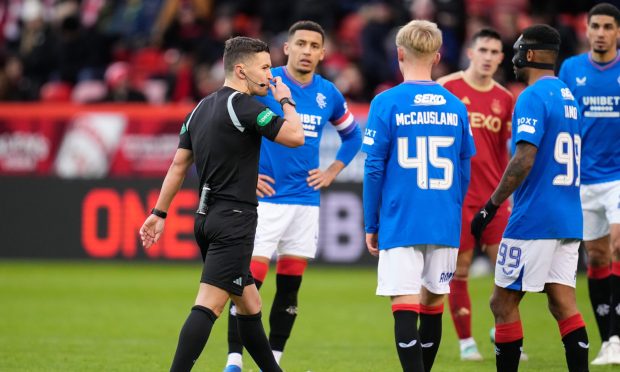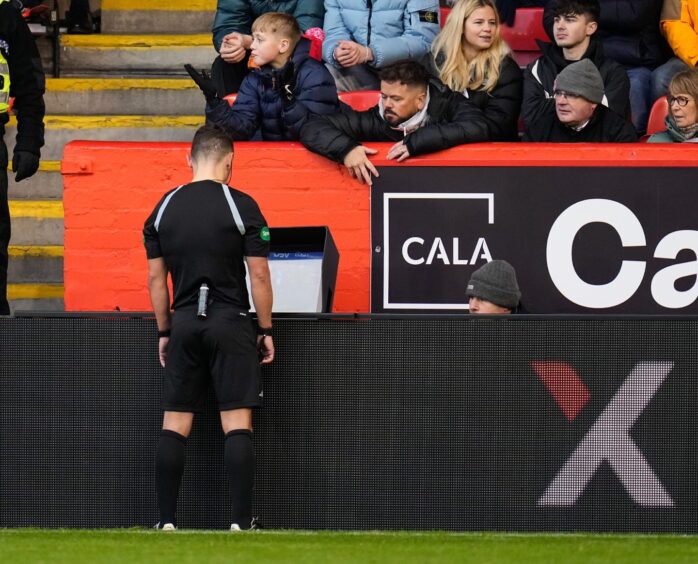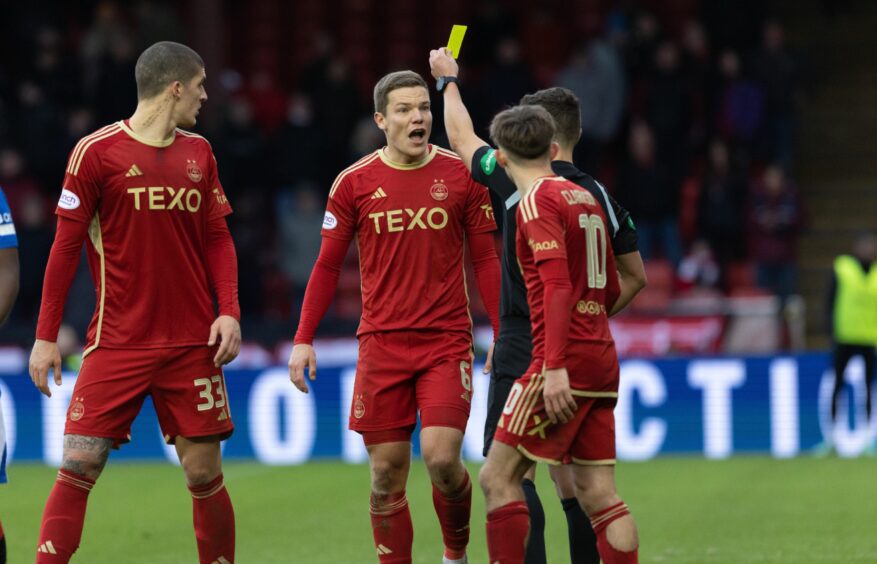Aberdeen’s clash with Rangers on Sunday ended with another Scottish football refereeing storm involving VAR – here’s our review on how the officiating team, led by Nick Walsh, performed in the big moments of the controversial 1-1 Pittodrie draw.
Throughout the first half, ref Walsh let a lot go, and tried to keep his cards in his pocket, but I thought there were some tackles and persistent fouling which warranted cautions.
The Dons’ Nicky Devlin was lucky to not be booked for a rugby-style challenge, and I also thought Reds captain Graeme Shinnie was lucky to avoid a booking for the amount of fouls he committed.
Walsh makes inexplicable calls not to book Rangers’ Cantwell and Sima for clear-as-day dives
The two worst non-bookings in the first half were by far the two pathetic dives from Todd Cantwell and Abdallah Sima.
We start with Cantwell. There’s only one word needed to describe his dive – the word is cheating.
Look at the state a this pic.twitter.com/OwSAskUbCg
— Paul (@PaulJohnMcFadd2) November 26, 2023
I was amazed that the referee did not caution him for simulation.
It was clear as day – initiating the contact and pathetically throwing himself to the ground – and more needs to be done in football to stamp such behaviour out.
Aberdeen players themselves have been guilty of diving during the past few seasons, too.
It needs to stop.
Referees need to take a stronger stance on diving, because it happens far too consistently now.
The Sima incident was the same: into the box, and then going down under no contact. He even let out a small scream as if he had been hacked to the ground.
Why didn’t Walsh book either player?
We saw this recently in Aberdeen’s 2-2 draw at PAOK in the Europa Conference League, where there were no cautions shown despite two clear PAOK dives.
Late Gers’ penalty was so soft as there’s shirt-pulling at every corner – with ref Walsh sending message it’s ok to throw yourself to deck
Of course, the biggest decision of Sunday’s Premiership fixture at Pittodrie came in the 90th minute, when Walsh awarded Rangers a penalty.
At the time, inside the ground, I honestly had no idea what VAR official Andrew Dallas was checking as there didn’t seem to be a clear and obvious foul.
After a lengthy check and another lengthy period where the ref Walsh spent almost three minutes looking at the monitor, a penalty was awarded for a pull from Aberdeen’s Stefan Gartenmann on Rangers’ Connor Goldson at a corner.
Firstly, as hinted at, VAR is supposed to correct clear and obvious errors. If it is taking that long to review an incident, then it is not clear and obvious.
On the decision itself, in my honest opinion it is such a soft spot-kick to award.
I thought it was similar to when Aberdeen played Livingston at the start of the season. In that game, Bojan Miovski clearly had his shirt pulled in the area, but I didn’t think it was enough for a penalty.
My opinion is the same with the Gartenmann-Goldson incident.
At every single corner, you’re going to have shirt-pulling. Does that mean every shirt pull is a penalty? Of course not.
Goldson made the most of it, throwing himself to the ground.
If I was a manager I’d tell my players to just constantly throw themselves to the ground if this is the state of refereeing in Scotland at the moment.
Nobody is getting booked for diving and referees are awarding penalties for players chucking themselves to the floor.
Football is a contact sport – but players are no longer honest about contact.
Some onlookers noted there was also a block on Gartenmann during the flashpoint, but the shirt pull begins before that.
VAR checks are so inconsistent
Aberdeen manager Barry Robson also complained about a forearm to the face of Dante Polvara from Goldson.
Now, I think that’s a borderline challenge, and one VAR surely should have taken a longer look at.
I know the referee saw the incident at the time, producing a caution for Goldson.
However, it was one of those I felt warranted a second look, and easily could have been red – especially when viewed by the slow down replays of VAR.
The biggest issue with VAR is just how inconsistent it is. Why does it check some things, but then ignores identical situations in other games?
Finlay Elder was a registered referee for six years and a category 5 official from 2019, with experience in the Highland League, Juniors and Club Academy.




Conversation